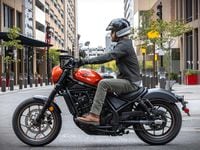Shoot Out
When Honda rolled out a bona fide 2010 Shadow RS a couple of months ago-after taunting us for nearly a year with claims that it was a "Sportster-slayer"-we thought, Eureka: we can finally stage a clash of new, lightweight standard-style cruisers. Harley's iconic, 50+ year-old Sportster versus Honda's venerable Shadow line, in existence for over 25 years. Both series now sported new machinery, and both models were eerily similar in looks, specifications and price. But something happened on the way to the comparison. The standard Sportster, as we had long known it, had disappeared; 2008 was the last year for the non-lowered XL 883.
In This Corner
Honda says "RS" stands for "retro standard," though really, the bike doesn't bludgeon you with nostalgia, nor is it really a standard. The Shadow 750RS (MSRP: $7799) has been slotted in as a companion to the long-lived Shadow Spirit 750 and Aero, (and more recent Phantom). While the other variants share basic architecture, this newest Shadow actually has a lot of new componentry, even if it's basic. The mechanicals are about as bare-bones as you'll find on a liquid-cooled bike; a single-crankpin, V-twin engine transferring power through a five-speed transmission to a sealed O-ring chain that twirls a 16-inch rear tire. That engine is Honda's tried-and-true 745cc, 52-degree twin, though it's now fed by Honda's programmed fuel-injection system-like the Phantom. The RS skips the showiness of its blacker Phantom brother, instead aping the standard lines of the seminal Harley XL 883 (the one we remember) complete with a smaller version of Harley's famed peanut tank.
The Iron 883 (MSRP: $7999), on the other hand, isn't far removed from its older sibling, the Sportster Low (seen in our last issue); they share the same narrow steel frame and lowered dual-shock rear suspension. True to its Dark Custom branding, the Iron is slathered in ebony, and gets many of the same style cues of its bigger-displacement Nightster brother, with a flip-out, side-mounted license frame, and a chopped rear fender with combination stop/tail/turn lights.
It also gets the Nightster's low-slung stance, which means less than two inches of suspension travel out back and a one-piece solo saddle just 26.3 inches off the ground (same as the Nightster and Low). The dark theme extends from the mid-mounted controls to the 19-inch front and 16-inch rear cast wheels, belt guard, and low-rise drag handlebar. The front fork is 39mm, and the rear shocks are preload adjustable. The centerpiece of the Iron 883 is an 883cc Evolution engine with Electronic Sequential Port Fuel Injection.
Eye of the Beholder
As you've likely sussed out by now, for all their similarities, the two bikes are practically visual opposites. The Harley rides low and dark while the Honda's posture is upright, and uh....bright.
Even in the subjective area of styling, most onlookers would agree that the Iron is a smash hit. The raw industrial feel and matte finishes give it an air of steam-punk chic, while details like fork gaiters play up the nostalgic vibe. A pair of shorty dual exhausts represent the only shiny bits. For such a grunge-y machine, the Iron is remarkably refined in terms of fit and finish.
Unlike the Iron, the RS doesn't bring unique styling to the table, but its clean carapace is still appealing, taking its tidy lines from the pre-2004 era Sportster. A too-large chrome air cleaner feels overdone, but the shotgun dual exhausts are nicely contrasted against blacked-out engine cases and cylinder barrels. There's no missing the seam on the small, 2.8 gallon tank though; along with plastic fenders and rocker box covers, it gives the RS's price-point status away.
Step or Climb?
Just climbing aboard each of these steeds couldn't be more different. The RS's nicely padded seat hovers a lofty 29.4 inches off the ground (almost exactly the same height as the old XL 883), but it's easily accessed, and the mid-mount pegs allow for roomy ergos that won't strain most riders' arms or hamstrings. The riding position fit everyone from our 5-foot 5-inch managing editor to our 6-foot, 2-inch publisher without complaint. The small handlebar is wide enough to serve up ample leverage and is in a comfortably neutral position, with barely any pullback.
All that praise was tempered by the pronounced lip on the pilot's seat, which locked in some riders and rubbed some tailbones the wrong way. As you'd guess, instrumentation is sparse. A large analog speedometer sits in the rider's line of sight above the handlebar, with display options for tripmeters and clock. The parts-bin mirrors offer a clean view, and metal hooks under the passenger seat provide good tie-down options.
It becomes abundantly clear that Harley is targeting shorter riders when you straddle the Iron 883 (you just step over it): everyone was surprised at how small the bike feels. The saddle is ultra-low, the bike is narrow across the beam, and the compact relationship between the grips, the pegs, and seat made even 5-foot-7-inch-tall yours truly feel claustrophobic. Every 6-footer that rode it was itching to jump off (save for Bartels).
The Harley's solo seat may look wide and comfy, but because of its low profile, isn't as well padded. Where its geometry squeezes riders over 5'10", the Iron makes it up on attitude and size-at least compared to its siblings. The Iron is 18 pounds lighter than the Low, and its three-inch shorter length makes for a easy-turning machine, though it suffers from a shortened lock-to-lock steering radius. It still weighs 50 pounds more than the RS.
The view over the Sportster's matte tank likewise also brings a minimal setup with a plain analog speedometer in the middle of a small dial (an LCD window displays tripmeter and clock functions). The Harley tradition of separate right and left turn indicators continues here too.
The Way That You Use It
Hit the starter button, and the liquid-cooled Honda fires up tout suite. Once running, the EFI settles into that familiar V-twin lope, but the bigger surprise is the whomp emanating from the pipes -these are not standard-issue sonics for Honda, which is notorious for wimpy notes. The RS actually brings some welcome aural meat to the party.
Pulling away from the curb on the Shadow is a no-drama affair, thanks to the light-action, cable-operated clutch. Although there's no boost in power compared to Honda's other V-twin Shadows, the RS is so much lighter that it just feels more sprightly, and the injected mill gets the job done efficiently. Acceleration is reasonably quick-though your arms won't get yanked out of their sockets. Still, the broad torque band makes excessive downshifting unnecessary, and Honda's V-twin pulls happily from low revs. Chain drive (rather than the power-sucking shaft on other 750 Shadows) livens up the power delivery and also keeps the rear wheel unencumbered.
The Iron's Evolution engine coughs to life on a mellow note, and the exhaust thrum from the dual pipes isn't as loud as you might expect. But Harley has had injection on Sportsters for years now, and fuel delivery is spot-on and seamless in all situations. Just twist and go, there's never a hesitation. If the uncharacteristically quiet exhaust note ain't your cuppa tea, Harley has plenty of aftermarket options to pump up the volume. The Iron also offers significantly louder mechanical engine noise to keep you company en route.
The Iron's brake and clutch levers require a bit more effort, but once you get the rhythm dialed, it's off to the races, with a nice, spirited response from the throttle. The Iron delivers a good deal more beans than the RS down low, with the torquey twin serving up plenty of pull. The Harley's torque advantage could be felt in the roll-ons and stoplight-to-stoplight sprints we staged. Power evens out significantly the higher up you go in the rev range, and engine vibration becomes more noticeable (but not annoying), though an amplified pulse develops in 5th gear at around 65 mph. Shift effort from both bikes' 5-speed gearboxes was equally light.
Turn it Out
With similar wheelbases for both (60 inches for the Iron vs. 61.5 for the RS), user-friendly, low-speed handling is a common denominator (though the Iron has much less ground clearance). 19-inch front wheels lead the way in front of 16-inch rears for both, and each bike responds well to steering inputs.
With the taller seating position of the RS, you can see through upcoming turns, and the broad spread of power does what it's supposed to, even if you have to wind it up to get out of trouble. The bike steers willingly, and handling is generally stable.
The springy, lightly damped Honda suspension provides a reasonably plush ride, though the rear shocks bottom readily when confronted by serious road acne. The RS suspension has longer travel, but it's not necessarily better sorted than the Iron's, wallowing in corners and not bringing much rebound. The Shadow's 4.6 inches and 3.5 inches of travel, respectively are too softly sprung (it's worse the bigger you are) and damping isn't much better.
With 3.6 inches up front and 1.6 inches of travel out back, the Iron's harsh ride shouldn't surprise anyone. But even with vastly underdamped suspension, the Iron delivers a better experience than its uptown cousin, the Forty-Eight. The slammed stance comes with a steep price, however; any speed bump, pothole or scarred asphalt will be felt. In fact, by the end of the day's testing, most riders learned to ask for the Honda before entering a stretch of twisty road, a bumpy back lane or even a nasty parking lot.
Fortunately, the Sportster's brakes are up to the task of hauling it down from speed. The two-piston front and single piston rear brakes are strong enough to inspire confidence-though it takes a bit of lever effort. But at least there are two discs, and both provide good feel and bite. The Shadow, alas, reveals its fiscal conservancy with a 298mm disc/twin-piston caliper combo up front, and a low-tech drum brake for the rear. Despite their parts-bin origins, they do an adequate job of slowing the Shadow, even if there's a soft initial bite and little feel.
And despite both bikes' modestly sized fuel tanks (3.3 for the Harley and 2.8 gallons for the Honda), each should get over 125 miles between fill-ups (with greater range on the Iron). Any more seat time on either would likely result in a numb butt anyway.
What's Your Poison
Marketing hoopla to the contrary, these bikes are more different than similar. Because the Sportster has been so significantly revised in recent years, its appeal to the Everyman pilot has been diminished. Compared to the RS the Iron has a more aggressive motor, superior fit and finish, and of course, the 'cool' quotient. It's a very good motorcycle, but in this guise, it just better suits beginning and shorter riders.
The RS doesn't have much of a wow factor, and isn't as technologically advanced as we might have expected. Still, the Shadow fits a large range of pilots, and has a broader overall performance envelope. Maybe we're just getting older, but these days, we prefer comfort over cool.
Riding Positions
Billy Bartels
:: 6 ft., 190 lbs., 33 in. inseam
The Sportster's downfall is suspension, or more specifically, a lack of travel. There is not much ground clearance and the suspension is harsh, though it didn't bottom out nearly as much as the Low we recently tested, despite identical suspension numbers and similar preload settings. And the rider triangle is actually pretty good for a tall guy like me (compared with the Low). Hopping from the Harley to the Honda meant getting a more spread-out layout. The RS feels like a big dirt bike, upright and tall with a narrow spread between the knees. It's great fun...as long as the road is smooth. The suspension might have loads of travel, but it's pretty uncontrolled, making for a nervous bike on bumpy roads. It was a toss-up as to which one I'd rather ride if the pavement is jacked: The pain and control of the H-D, or the sloppiness and comfort of the Shadow. Despite that, they're both fun bikes. And good lookers as well, though the beautifully-finished Harley looks far more expensive, versus the obvious cost-cutting bits on the Shadow (drum brake, an over-large air cleaner, stamped steel tank). Despite a $200 premium, I think the Iron kills the Shadow for value. The bottom line is that either the Honda or the Harley is right; the proof will be on the sales floor.
Andrew Cherney
:: 5 ft. 7 in., 160 lbs., 30 in. inseam
Harley's new design mandate seems to be, "black and low," and it must be working; they've sold a ton of Dark Customs from the outset, with most of those being Sportsters. I can dig the curb appeal; the Harley kills the Shadow on sheer style. But the Sportster takes a big deduction right off the bat for (lack of) suspension. Unlike Bartels, when the road got bumpy, I didn't have to think twice about fleeing for the safety of the Shadow's bouncy springs. The Harley needs some serious suspension mods to make it tolerable for me, and guess what? I wouldn't be buying a $7999 bike if I had $9,000 in the first place. I prefer the machine that fits me right off the bat, with less stuff to fix. Ironically, that happened to be the taller Honda. Unfortunately, the RS is littered with plastic bits and some less-than high-tech components, so I'd dish out higher marks if it was priced oh, say $300 less. The powerband is tame and the brakes are so-so, but overall, the RS is a blast to ride. With light steering, decent handling and balance, it's a machine you don't have to learn to ride well. I'd jump on it over the Harley without hesitation. Which is kind of a shame, because if they made Sportsters regular-sized again, it'd be a much tougher decision.















/cloudfront-us-east-1.images.arcpublishing.com/octane/OQVCJOABCFC5NBEF2KIGRCV3XA.jpg)
/cloudfront-us-east-1.images.arcpublishing.com/octane/F3O2DGLA4ZBDJGNVV6T2IUTWK4.jpg)
/cloudfront-us-east-1.images.arcpublishing.com/octane/ZXYQE3MHLFDSPKNGWL7ER5WJ4U.jpg)
/cloudfront-us-east-1.images.arcpublishing.com/octane/RDF24VM7WVCOBPIR3V3R4KS63U.jpg)
/cloudfront-us-east-1.images.arcpublishing.com/octane/W7RSIBFISNHJLIJESSWTEBTZRQ.jpg)
/cloudfront-us-east-1.images.arcpublishing.com/octane/AERA26ENRNBW3K324YWCPEXYKM.jpg)
/cloudfront-us-east-1.images.arcpublishing.com/octane/YWX3YX7QBBHFXFDMEEEKRG4XJE.jpg)
/cloudfront-us-east-1.images.arcpublishing.com/octane/I7OKI53SZNDOBD2QPXV5VW4AR4.jpg)
/cloudfront-us-east-1.images.arcpublishing.com/octane/IH52EK3ZYZEDRD3HI3QAYOQOQY.jpg)
/cloudfront-us-east-1.images.arcpublishing.com/octane/K2FSAN7OWNAXRJBY32DMVINA44.jpg)
/cloudfront-us-east-1.images.arcpublishing.com/octane/G4XK7JL24FCUTKLZWUFVXOSOGE.jpg)
/cloudfront-us-east-1.images.arcpublishing.com/octane/JJNXVAC27ZCDDCMTHTQZTHO55Y.jpg)
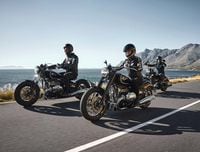
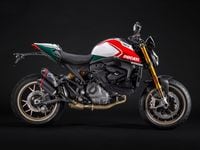
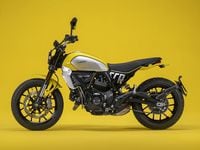
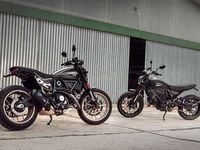
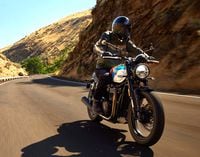
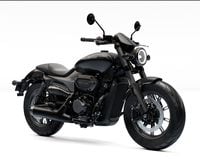
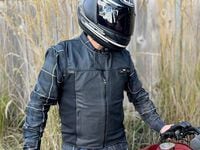
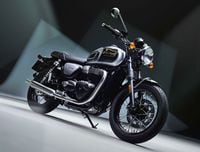
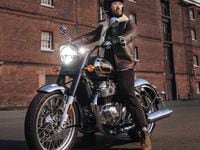
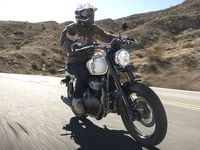
/cloudfront-us-east-1.images.arcpublishing.com/octane/3VSTLPKOHNFTRJTIAAXDPGCPA4.jpg)
